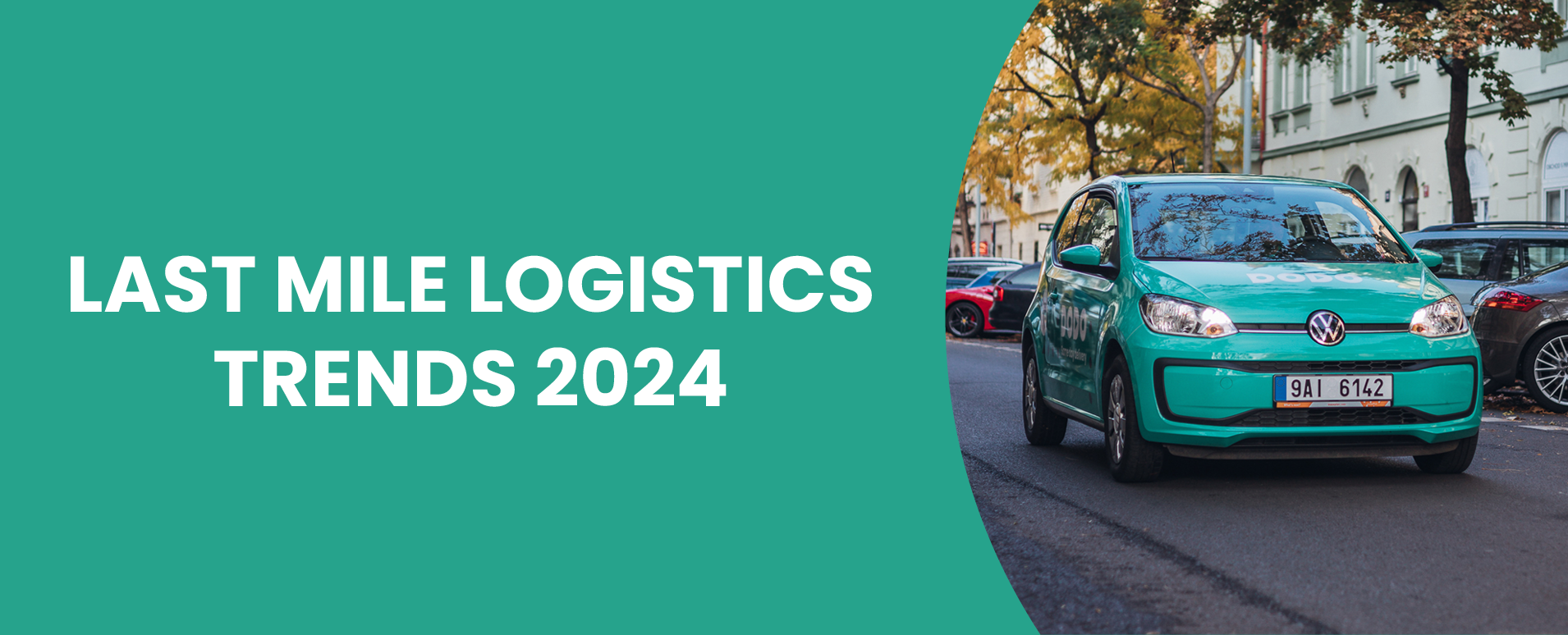Last mile logistics: trends for 2024

More demanding customers, the power of artificial intelligence, sustainability, and fast delivery of oversized shipments. These are the trends driving e-commerce across industries. Learn how you can respond to them, what to focus on now, and what’s more like the music of the future.
Delivery on the day of ordering
If you don’t offer same day delivery, you may already be losing customers today. In fact, the popularity of fast and accurate delivery is growing and will become the standard within a few years. The good news is that customers are willing to pay more for this service than for regular delivery. However, we should add that we can expect to see a change in this regard – as same-day delivery becomes more standard across e-commerce segments, customers’ willingness to pay more for this service than the current price of standard delivery may decrease.
Implementing same-day delivery, however, requires efficient planning and maximizing the use of available resources. Other emerging trends may help with this.
Technology
Artificial intelligence is not shying away from last-mile logistics, becoming an increasingly important element of the overall technological solution. With the help of modelling, it is possible to allocate the exact number of vehicles and couriers for a given area. Delivery routes thus take into account the current situation as well as the trends of the next hours and days. This makes same day delivery an efficient and affordable solution that not only provides a better customer experience but is also more environmentally friendly and contributes to smoother traffic in cities.
“Last year, we were able to launch an advanced AI Predictor that can forecast customer orders in a given area two weeks in advance based on the data collected, with accuracy down to specific hours. We have been able to keep the error rate consistently below 10%,” says DODO Group CCO Peter Menky, adding: “The importance of advanced data analytics and future modelling work will continue to grow. Logistics companies will be able to make more informed decisions, which will, among other things, lead to increased speed without making the service substantially more expensive.”
Alternative vehicles
AI also brings new opportunities in the field of alternative vehicle deployment. By reliably predicting delivery demand, logistics companies will be able to adjust the mix of transport vehicles. Thus, we expect to see greater deployment of electric scooters, cargo bikes, robotic trucks, drones, or even river vessels. Legislation and technology will thus become less and less of a limit. It will depend more on the ability to allocate suitable means of transport to a particular urban area or district. In addition to demand, the current traffic situation, transit times, vehicle capacity limits, the number of deployed vehicles in operation, time slots for delivery to specific customers, the location and operational specifics of dispatch points, or the loading and unloading times of vehicles will also fall into the route calculation. The complexity of configuring transport routes will thus increase even further.
Zone logistics
E-commerce customers are more and more often making purchasing decisions based not only on the price of the goods, but also on the speed and quality of delivery of the order. According to the 2023 market research, fast delivery is important to ¾ of shoppers. Sustainability of logistics is equally important to a third of shoppers. One way to speed up the delivery of parcels in cities while significantly reducing the environmental impact is the concept of zonal logistics.
Zonal logistics is a concept of smart resource sharing that ensures that the customer gets their shipment faster, the e-shop pays less for delivery, and each of the vehicles operating in the area is used to its maximum capacity so that they do not run ’empty’. Each city operates as a separate zone, or group of zones, organised by artificial intelligence within which the branches and pick-up points of different retailers are located. The zonal approach to logistics will become more and more common and will further reduce delivery times while maintaining the affordability of express delivery.
We wrote about this trend in detail in our article Zonal logistics: even faster and more efficient delivery.
Dynamic pricing
Although customers are demanding more and more in terms of speed and accuracy of delivery, the willingness to pay extra for same day delivery is relatively low. A possible response is so-called dynamic pricing, as you know it from e.g. airline tickets, taxis or hotels. In logistics, dynamic pricing allows you to set the price of transport based on the current demand, thus optimizing delivery peaks while making delivery within time slots available to as many people as possible.
“With dynamic pricing, customers will more often be able to choose between a more expensive delivery in a peak delivery time slot or a more affordable option in an off-peak time slot. At DODO, we tested this concept with some of our clients last year and based on the very positive results, we believe that retailers across all segments will start to use it widely this year,” says Peter Menky, describing the new feature.
Same day delivery for oversized goods
The standard set by online grocers is spreading to other segments. Same day delivery will be demanded by customers even for large shipments or for delivery from brick-and-mortar stores. Last year, we introduced this new standard to the world of sports equipment through our cooperation with Decathlon or in the electronics sector for last-mile logistics for Electro World. How quickly will this trend spread further? Peter Menky has a clear idea: “I am convinced that same-day delivery in hourly slots will reach practically all e-commerce segments in the coming years and will become the expected standard for customers.”
Don’t let trends overwhelm you. Make an appointment with us and let us handle the last mile logistics.
